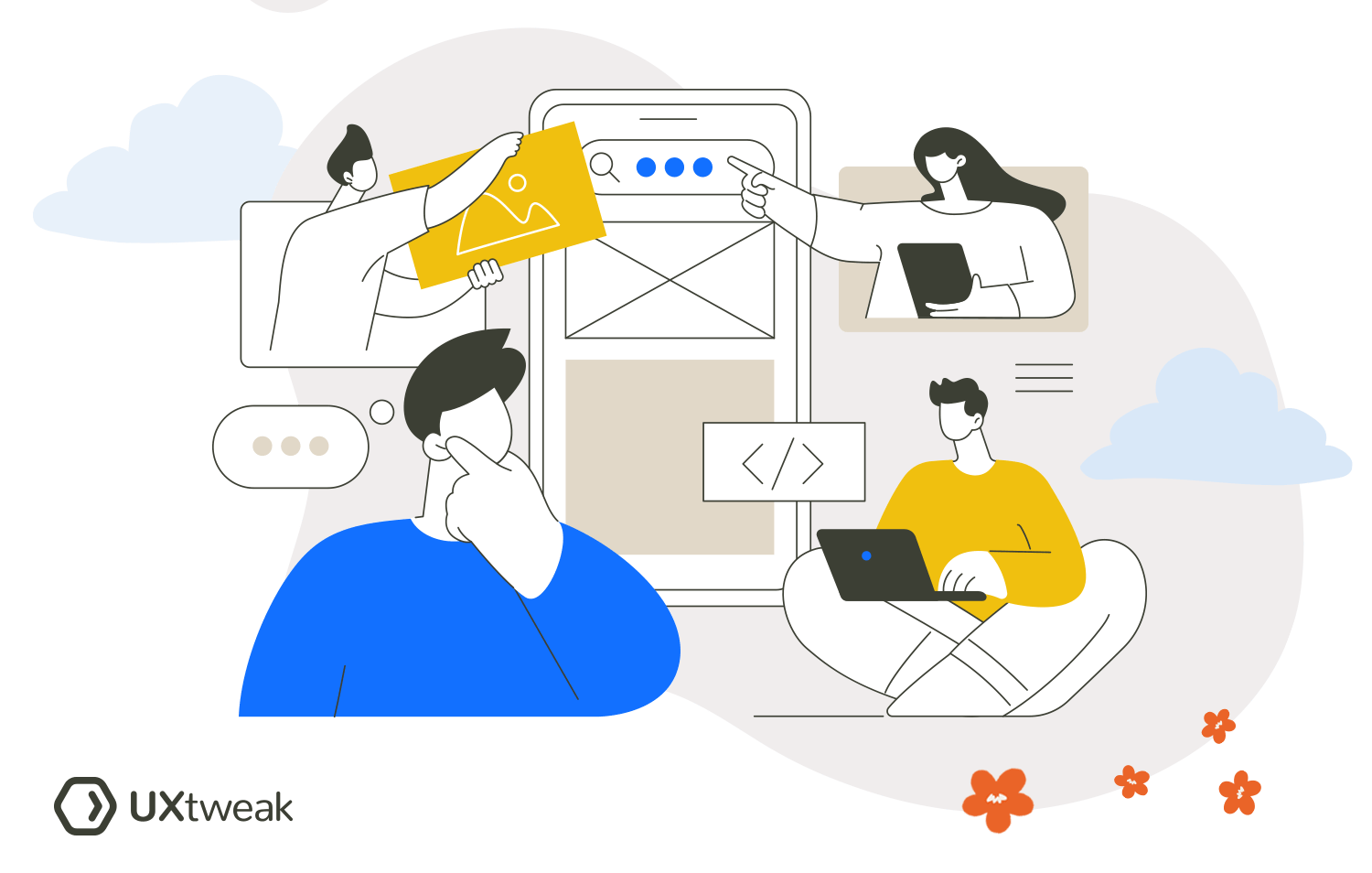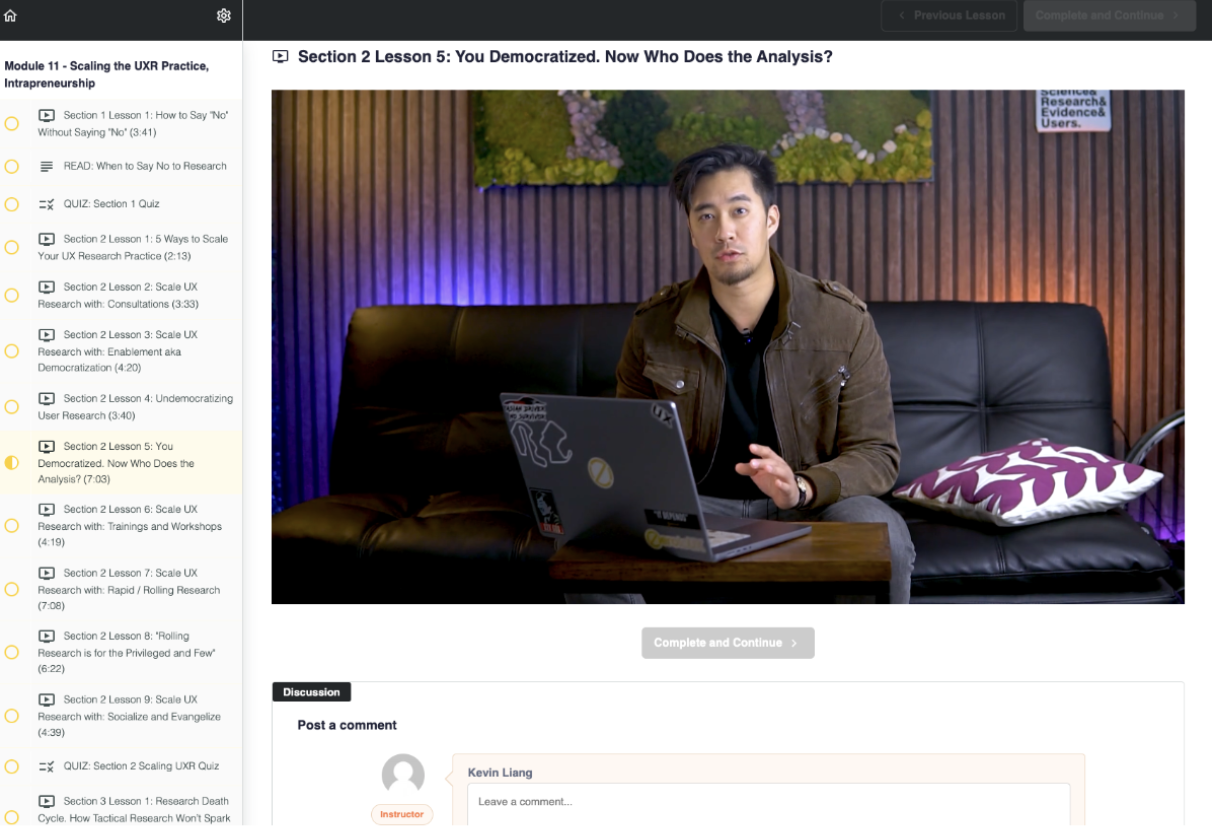Now that we’ve covered the different types of user interviews and understood how to write a good plan, let’s go through the process of how to conduct user interviews. We’ve also prepared a bunch of tips for you to nail your first interview, as well as the considerations you should keep in mind.
Let’s dive right into this step-by-step guide and understand how to make the most out of your interviews with users.
How to conduct user interviews?

1. Identify the point of the user interview
Before diving into user interviews, it’s essential to define your objectives. What specific insights are you seeking to gain? Are you looking to understand user preferences, identify usability issues, or gather feedback on a new feature? Clearly defining the purpose of the interview will guide the entire process and ensure you ask relevant user interview questions.
Take the time to plan out the whole process by putting together a user interview plan. It will serve as your structured guide through the whole process.
2. Draft and pilot a user interview guide
Start by outlining the key topics and questions you want to cover. Ensure that your questions are open-ended to encourage detailed responses and avoid leading questions that may bias the participant’s answers. Once drafted, pilot the interview guide with a small group to identify any ambiguities or gaps that need to be fixed.
If you’re going for the structured interview type, you’ll need a detailed interview script, rather than a guide. Check out our guide on writing a user research script with a helpful template you can use to write it.
3. Choose a user interview tool
Depending on your preferences and the nature of your research, you can opt for in-person interviews or remote interviews via video conferencing software or a user interview platform.
If you decide to use an online platform for the interviews, make sure it can support all necessary functionalities. Pay attention was features the tool offers for participant recruitment, interview scheduling & recordings, etc.
4. Recruit participants for you interviews
Start by creating a detailed participant profile based on your target audience demographics, behaviors, and characteristics. You can utilize various recruitment channels such as social media, email lists, or user panels to find the right people. Offer incentives, such as gift cards or discounts, to incentivize participation and ensure a diverse pool of participants.
We know recruiting can be hard and can take so much time! Leave it on us and use the precious time to conduct research and analyze insights. UXtweak User Panel gives you access to participants from over 130 countries. Just set up your participant criteria, no matter how niche, and let us find the people for you!
5. Conduct the user interview
When conducting the interview, create a comfortable and welcoming environment to put the participant at ease. Begin with a small talk, buid rapport and explain the purpose of the interview.
Follow the interview guide while allowing flexibility for organic conversation and follow-up questions. Actively listen to the participant’s responses, probing for deeper insights when necessary. Remember to respect their time and privacy throughout the process.
Also, don’t forget to take notes during the user interview for easier and quicker result analysis. ⬇️
6. Analyze collected insights
Once the interviews are complete, it’s time to analyze the gathered feedback to uncover patterns, themes, and actionable insights. Transcribe the interviews and organize the data using qualitative analysis methods such as coding or thematic analysis.
Go through the recordings once again, revisit the notes you (or your note-taker) took during the sessions. Look for recurring pain points, common user behaviors, and emerging trends that can inform design decisions. Consider collaborating with team members or stakeholders to gain diverse perspectives on this data.
For a more in-depth insight into analyzing user interview notes, you can check our guide or watch the video below.
7. Share the results
Finally, share the findings of your user interviews with relevant stakeholders to inform product development and decision-making. Create a comprehensive report or presentation highlighting key insights, supported by quotes, interview excerpts, and data visualizations.
Tailor the presentation format to suit the preferences of your audience, whether it’s a formal meeting, a written report, or a collaborative workshop. Encourage discussion and brainstorming around potential solutions based on the user feedback.
How many user interviews are enough?
Just like with many other questions in user research, the answer is – it depends. However, while there’s no perfect number, aiming for around 5-10 interviews often provides valuable insights. On the other hand, in Voice of the Customer, Gaskin, Griffin, Hauser & Co recommend 10–30 interviews that produce 75–150 statements from customers.
More complex cases and research goals, or diverse user bases may require a larger sample size. On the other hand, if your resources are quite limited, you may choose to go for a smaller sample.
Your main goal should be to capture diverse perspectives and talk to different user personas. Aim uncover meaningful insights while staying mindful of practical constraints.
What is the right time to do a user interview?
User interviews are usually conducted early in the design process and are used for gathering foundational insights and validating assumptions before significant resources are invested. Simply speaking, this is your ultimate user research method, perfect for when you want to get to know your users, their pain points, and needs.
As the product evolves, conducting iterative interviews throughout the development lifecycle ensures ongoing feedback and validation, which is also an essential part of the process.
However, user interviews can also be valuable at later stages to evaluate existing features, gather feedback on prototypes, or explore new opportunities for innovation.
Ultimately, the right time to conduct a user interview is when it aligns with the research goals and can contribute meaningfully to the design and development process. This is a very flexible research method that can help you gain valuable insights almost at any step of the process.
How to talk to users during user interviews?
When interviewing users, it’s important to create a comfortable environment to encourage honest feedback. Here are some of our tips on how to talk to users during interviews:
- Start by introducing yourself and clearly explaining the purpose of the interview – it will help the users feel at ease.
- Use open-ended questions to collect more detailed responses.
- Listen actively. It’s also a good idea to use body language to create emotional connections – maintain eye contact and smile when appropriate.
- Finally, having patience is important. It allow users time to think and respond.
Tips and tricks for a successful user interview

Use warm up questions
Starting with a few light, non-threatening questions helps to break the ice and makes participants feel more comfortable. These questions can be about their background, daily routines, or general thoughts related to the topic. The goal is to build rapport and ease them into the interview process.
Chat with them about the weather, ask how their day was, any kind of small talk like this will help to make the environment more comfortable for them to share their honest opinions further in the interview.
Don’t overwhelm the participant
Bombarding participants with too many questions at once can be counterproductive. Instead, pace your interview by allowing time for participants to think and respond. Leave time for follow-up questions, and for the participants to fully express their thoughts. This approach encourages more thoughtful and detailed answers.
For better structure, break the interview into manageable segments and take brief pauses if necessary.
Don’t use leading questions
Leading questions are those suggesting a particular answer to the participant. Although those are tempting, it’s important to recognize and avoid them in order to not introduce bias in your interview. For example, instead of asking, “Do you find this feature useful?” you might ask, “How do you feel about this feature?”
This way you’re letting the participant express themselves without being influenced. This also gives space for negative feedback, which would you would probably not get by leading the participants towards positive answers.
But don’t be afraid. Negative feedback is usually the most insightful thing you’ll hear, as it directly pinpoints areas that need to be improved.
Take detailed notes
Make sure to take notes during the interview. To make it easier, invite a note-taker to join your interview and write down all the important details for you. This practice helps in accurately capturing the participant’s responses and understanding the context of their feedback.
With UXtweak’s Live Interviews tool, taking notes, during the sessions is very easy! You can invite a Note-taker to join your call with the participant and let them creates time-stamped notes to help the Moderator. The best thing is – they will not be visible to the participants and won’t interfere with the 1 on 1 conversation environment.
Utilize funnel technique
The funnel technique involves starting with broad questions and gradually narrowing down to more specific ones. This method helps in gathering general impressions first, then diving deeper into particular areas of interest.
For instance, you might begin by asking about the participant’s overall experience with your product and then focus on specific features or interactions.
For additional strategies and user interview tips, check out our video:
Things to keep in mind during the interview
Although user interviews are a great way to collect user feedback, it’s important to understand that they too have their flaws. Here are some important considerations to keep in mind:
- Moderator bias: Even the most experienced moderators can unintentionally introduce bias into an interview. This can happen through subtle cues like body language, tone of voice, or even the way questions are framed. It’s important to be aware of these potential biases and try to minimize them.
- Participant’s recall ability: Participants will not always recall all of their interactions and impressions of your product. What they report during the interview may be influenced by recent events or the context of the interview. This is why interviews are often complemented with other research methods like usability testing or behavior analytics data.
- Social desirability bias: Participants might tailor their responses to what they think is socially acceptable or what they believe the interviewer wants to hear. To prevent this, reassure participants that there are no right or wrong answers and emphasize the importance of their honest feedback in the beginning of the interview.
Interviews, especially semi- and unstructured ones, are often unpredictable and may not always go as expected. Even the most detailed script will not prevent you from unexpected twists like participants’ reactions to certain questions, their answers, expressions, or even mood swings.
Humans are unpredictable, and it may happen to anyone that the interview will not go as planned. However, it’s important to know how to navigate this kind of situation.
We recently asked the UX community to share the funny, strange, and relatable stories from participant recruiting and user interviews. We’ve collected a bunch of great stories, that were full of valuable lessons to learn.
Conduct user interviews with UXtweak
Looking to include user interviews in your research? With UXtweak’s new Live Interviews tool you can set up 1 on 1 interviews with your users in just a couple of clicks!
Seamlessly schedule, recruit, conduct, and analyze your all user interviews, or combine them with other research methods, all in one platform!
We are also enabling moderation support for all of the other study types within UXtweak app. You can conduct moderated usability tests, card sorts, and whatever else you need!
Learn more about the feature and be the first to try it!




